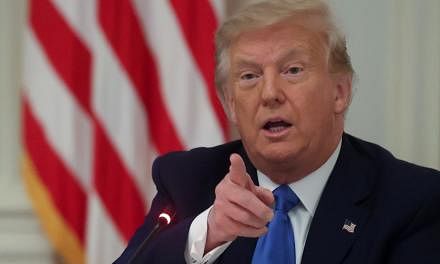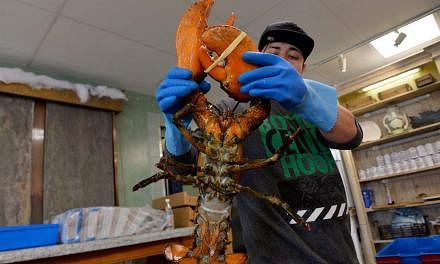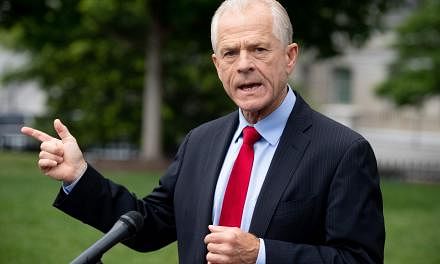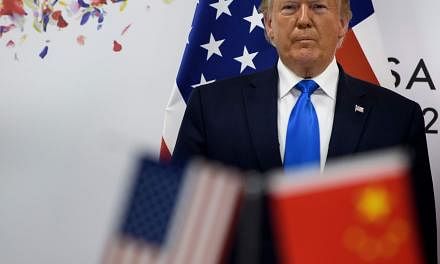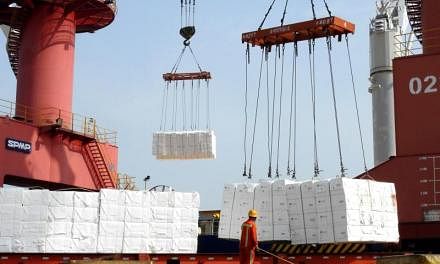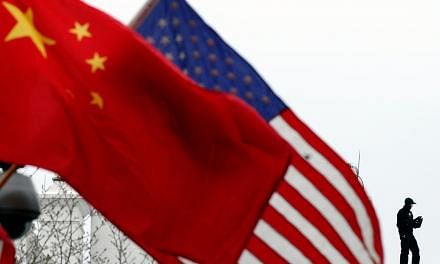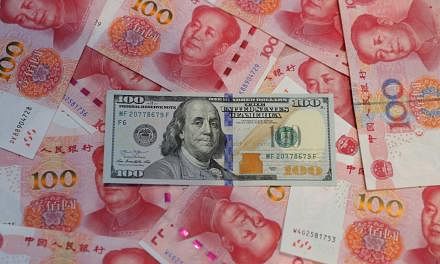BEIJING (NYTIMES)- US President Donald Trump says he is optimistic that a landmark trade deal with China is close. Chinese officials are not so sure.
The two sides in recent weeks agreed to the broad outlines of an agreement that would roll back tariffs in both countries, with China buying more American goods and opening up some markets to foreign goods.
The trade deal looks like a good one for Beijing, since it would largely spare the government from making substantive changes to its economy.
But some of the biggest details - like the enforcement mechanism to ensure China complies and the timing for the removal of tariffs - still haven't been hammered out.
Beijing officials are wary that the final terms may be less favourable, especially given Mr Trump's propensity for last-minute changes, according to two people familiar with China's position.
"The work team is still continuing to negotiate because we still have a lot to do," Commerce Minister Zhong Shan said on the sidelines of the 11-day annual session of the National People's Congress, which began Tuesday (March 5). At the legislative meeting, senior Chinese officials have been taking turns warning that challenges remain.
The emerging gap is starting to put in doubt plans for President Xi Jinping to meet with Mr Trump in late March or early April to sign a deal.
Chinese officials face an obvious dilemma in asking their president to fly all the way to Mr Trump's Mar-a-Lago club in Florida, without a clear understanding of the final details. And persuading Mr Xi to attend such a summit meeting is no easy task, given his imperative of appearing strong before a domestic audience.
"If they're going to send their president all the way to Florida, they have to know there's an agreement in the end," said James Green, who until August was the top trade official at the US Embassy in Beijing and is now a fellow at Georgetown University.
Mr Trump's meeting last week with North Korean leader Kim Jong Un, in Hanoi, Vietnam, serves as a cautionary tale. The meeting ended abruptly when the US president decided the North Koreans were not offering sufficient terms.
Over the past two years, Chinese negotiators have also repeatedly believed they had a deal, only for it to come apart at the last minute.
Commerce Secretary Wilbur Ross in the summer of 2017 presented a plan, which Mr Trump quickly disavowed. They thought they had an understanding with Treasury Secretary Steven Mnuchin last year, focused on cars and financial services, and then Mr Trump imposed tariffs.
It is a difficult position for the Chinese, who want to avoid an embarrassment. Mr Trump is unpredictable, and China can't be assured he will not change his mind when the two presidents meet.
But the Chinese also recognise that a presidential summit meeting may be the only path to completing a deal, since Mr Trump has a tendency to undercut his advisers.
A common view in China is that "Donald Trump is very interested in doing a deal himself," said Bo Zhiyue, the deputy dean of the New Era Development Research Institute at Xi'an Jiaotong-Liverpool University in Suzhou, China.
The US and China have discussed holding further discussions in Beijing a few days after the National People's Congress ends March 15, two people close to the trade talks said.
Michael Pillsbury, a China scholar at the Hudson Institute who advises the Trump administration, said that Mr Xi's silence on the trade talks was an ominous sign, and that several of the points that the US thought China had agreed to were far from settled.
"There may be the need for another round of talks before the signing summit," Mr Pillsbury said.
The biggest barrier to a deal continues to be the enforcement of terms, people familiar with the discussions said. The US has insisted that it retain the right to raise tariffs if China violates the agreement, without retaliation by Beijing.
But some Chinese officials have criticised the arrangement as a potential infringement of China's sovereign rights. There are also disagreements over whether Beijing is going far enough in its promises to curb the forced transfer of American intellectual property as a condition of doing business in China.
Precisely how tariffs would be rolled back is still in play, too. If its conditions are met, the US negotiating team has signaled that it will lift 10 per cent tariffs on roughly US$200 billion (S$272 billion) of Chinese goods that Mr Trump imposed last autumn, people familiar with the discussions said.
But the fate of 25 per cent tariffs imposed last summer on an additional US$50 billion of goods is less clear.
Robert Lighthizer, Mr Trump's top trade negotiator, also prefers to roll back its tariffs over time as China makes changes to its law and economy, while China is arguing for them to be lifted altogether when the deal is signed, according to two people with knowledge of the negotiations.
Chinese officials are leery of continued talks, since they don't have to give up much under the current, albeit tenuous, agreement. And they do not want to commit China to structural changes in its economy, according to three people familiar with the negotiations.
The emerging deal would allow China to sign long-term contracts for the purchase of oil, gas, soybeans and other natural resources that its economy needs and cannot easily produce at home.
It would not require Beijing to buy large volumes of American manufactured goods, which could threaten jobs in China's vast but slowing manufacturing sector.
The agreement would also do little to limit China's government programmes to assist the development of high-tech manufacturing. China sees its economy's long-running evolution toward such industries as essential to creating the high-paying jobs that its increasingly educated workforce has begun to expect.
In a bid to appease Mr Trump, China shelved last year the term for the initiative, "Made in China 2025". The term had become a lightning rod for criticism in the US.
Premier Li Keqiang did not use it in his annual address to the National People's Congress on Tuesday, after using it in previous years. Asked about the omission of "Made in China 2025", Huang Shouhong, director of the State Council Research Office and leader of the team that drafted the speech, said there was not room in the speech for every issue.
If the US presses too hard, Beijing is also likely to take the position that no deal is better than a deal that could limit China's economic development. And it is preparing for that possibility.
The national budget outlined by Mr Li on Tuesday includes corporate tax cuts and extra lending from the government-controlled banking sector. That could help them weather trade frictions, however long they last, and bounce back from a recent credit crunch that has particularly affected smaller private companies.
Four-fifths of the savings from the main corporate tax cut announced on Tuesday will ultimately flow to manufacturers, Mr Huang said.
"They have faced many difficulties," he said. "Therefore, this time the focus of tax reduction is on small and micro enterprises and manufacturing enterprises."


